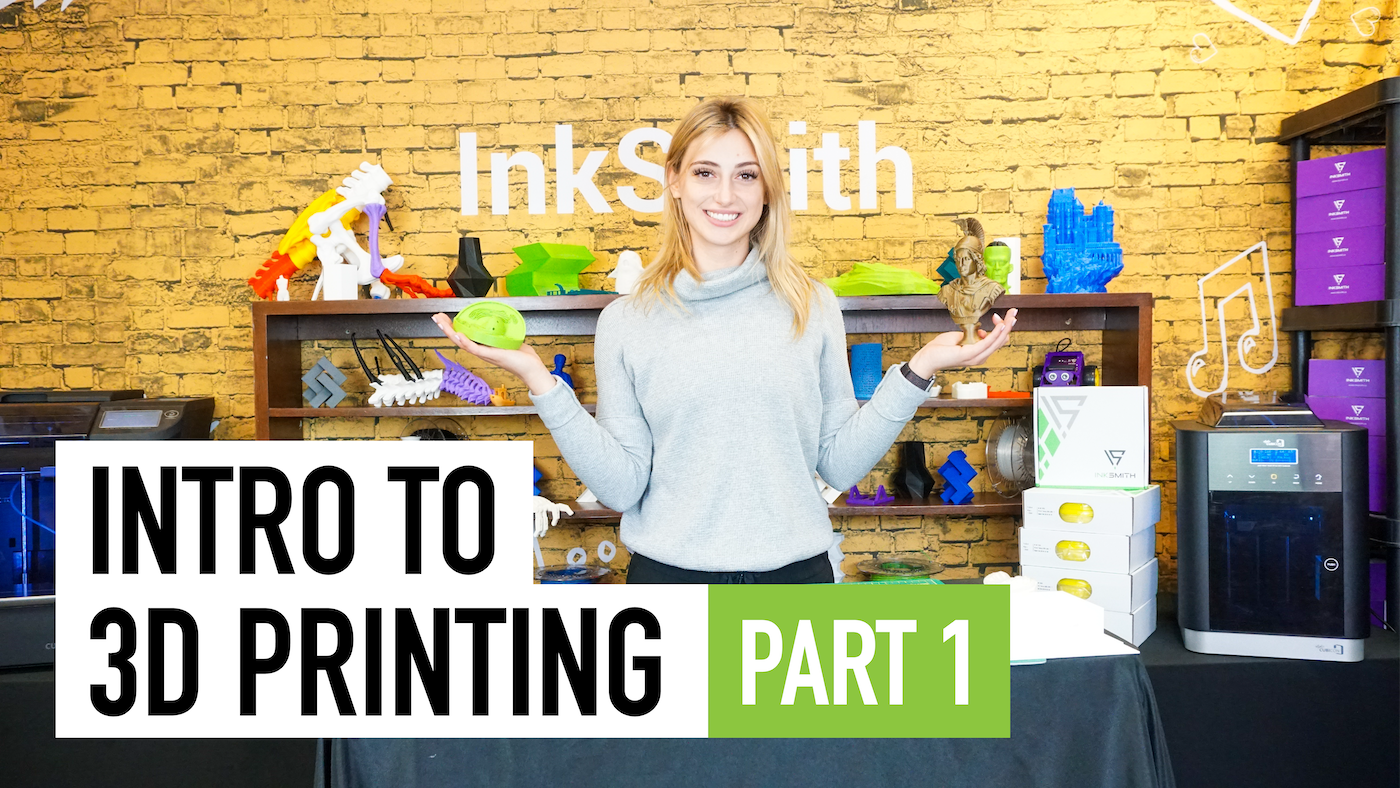If you've never 3D printed anything for or you want to introduce 3D printing to your students, check out this tutorial video!
What is 3D Printing?
3D printing falls under the category of Additive Manufacturing Technologies. Within Additive Manufacturing Technologies there are a bunch of different categories. The most common type of 3D printing is known as FDM printing, which stands for Fused Deposition Modelling. In FDM printing material is melted and extruded from a machine, layer by layer to form an object. Another way to think of a 3D printing is like a fancy glue gun. Material is melted and then squeezed out in a thin line. A 3D printer works similarly to a paper inkjet printer. Except instead of ink, we use a spool of plastic, which is called filament. Then we tell the printer what we want to print and it uses the filament to print our object.
What is 3D printing used for?
3D printing is used in all sorts of different applications. Some examples of where we see 3D printing being used today are:- In Manufacturing: Making parts of machines, and rapid prototyping
- In Architecture: Architects will use 3D printing to create scaled-down models of buildings.
- In Dental: Dentists will use 3D printing as an alternative to creating molds of teeth.
And there are many other different industries that make use of 3D printing. We at InkSmith specialize in is using 3D printing for education.
3D Printing in Education
In recent years there have been more and more schools putting 3D printers in the classroom. 3D printers in the classroom are great because there are so many ways you can use these machines. You can 3D print demonstration models, 3D parts for your project, 3D print working prototypes, 3D print historic models, and so much more.
Why Use 3D Printing?
3D printing is great because it really teaches you to think, and helps to develop design thinking and problem-solving skills. With 3D printing, you have to think about how the part will function, how it should be designed, and how it should be printed. 3D printing is also great because it’s a much more cost-effective than say buying demonstration models, or buying parts for your prototype. You can just print your own!
How much does 3D printing cost?
So how much does 3D printing actually cost? 3D printing is relatively inexpensive. While the cost of different machines will vary, the only consumable resource you’ll need to replenish is the 3D printing filament. 3D printing filament varies in price depending on the type and quality of filament you are printing with. There are many different types of 3D printing filament out there, that are made up of all sorts of different kinds of plastics.
For schools, libraries, prototyping and education purposes, InkSmith always recommends using PLA filament. PLA filament, or Poly Lactic Acid, is a non-toxic, biodegradable thermoplastic plastic polyester which is derived from fermented plant starch. This type of filament is the safest option for use in classrooms.
PLA is also great for education because it’s the easiest type of filament to use for FDM 3D printing. It’s less prone to warping, it’s more consistent to print with and it’s easily removable from the print surface.
For InkSmith 3D printers we recommend the use of InkSmith brand PLA filament because it’s been rigorously tested to ensure the correct temperature settings for use on our printers.
Is 3D printing safe for schools?
Unlike a lot of 3D printers on the market, InkSmith 3D printers are among the safest machines for use in schools and classrooms. All InkSmith 3D printers are enclosed and filtered. This means that any airborne contaminants are contained and filtered within the machine. Combined with the use of non-toxic PLA filament, 3D printers offer a safe and amazing way for students to make, create and explore new technologies.


Unboxing the Cubicon Single Plus 3D Printer
Introduction to 3D Printing: How to actually print!